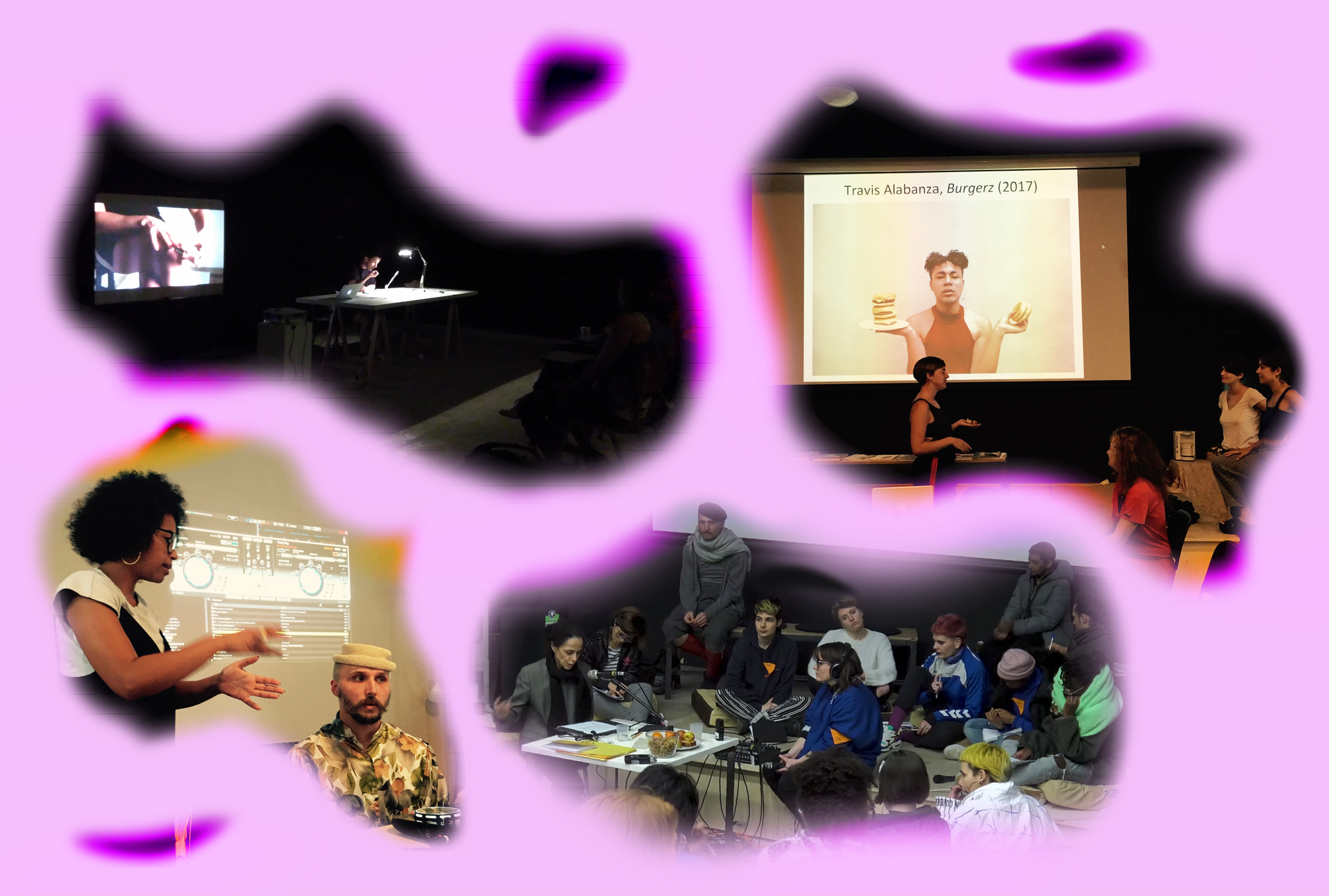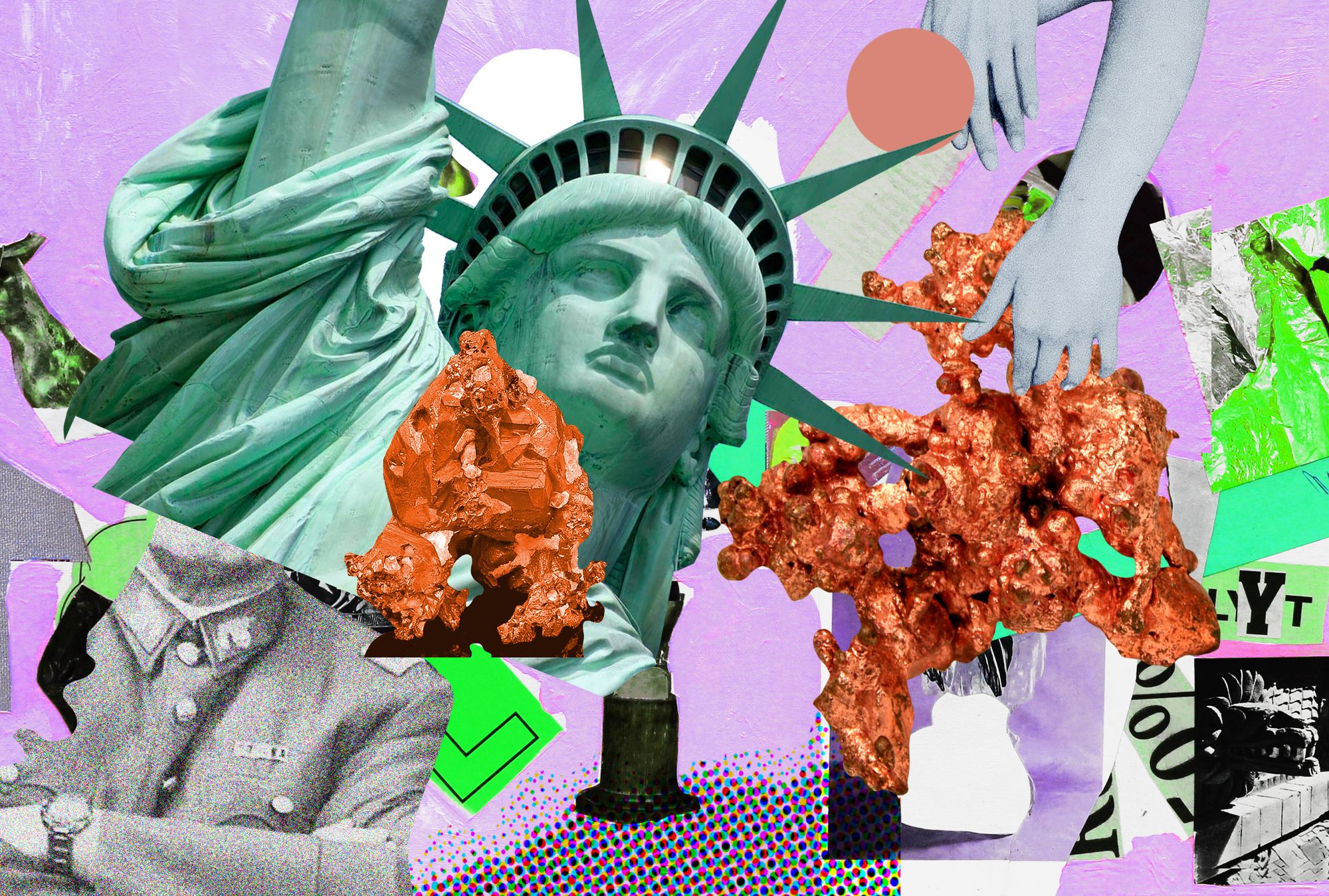
I’m sitting at my desk, looking at pictures of a statue. Her empty face and empty eyes give a strange sense of detachment to her tall, imposing frame. Around her, the deep blue hues of the northern Atlantic Ocean; behind her, one of the most populous metropolises in the world: New York City. She holds a torch upward, her right foot slightly raised in a suggestion of movement, walking away from a broken shackle and chain—a commanding presence, meant to be seen by all who arrive at these shores. Her full name is “Liberty Enlightening the World,” but she is most widely known as the Statue of Liberty.
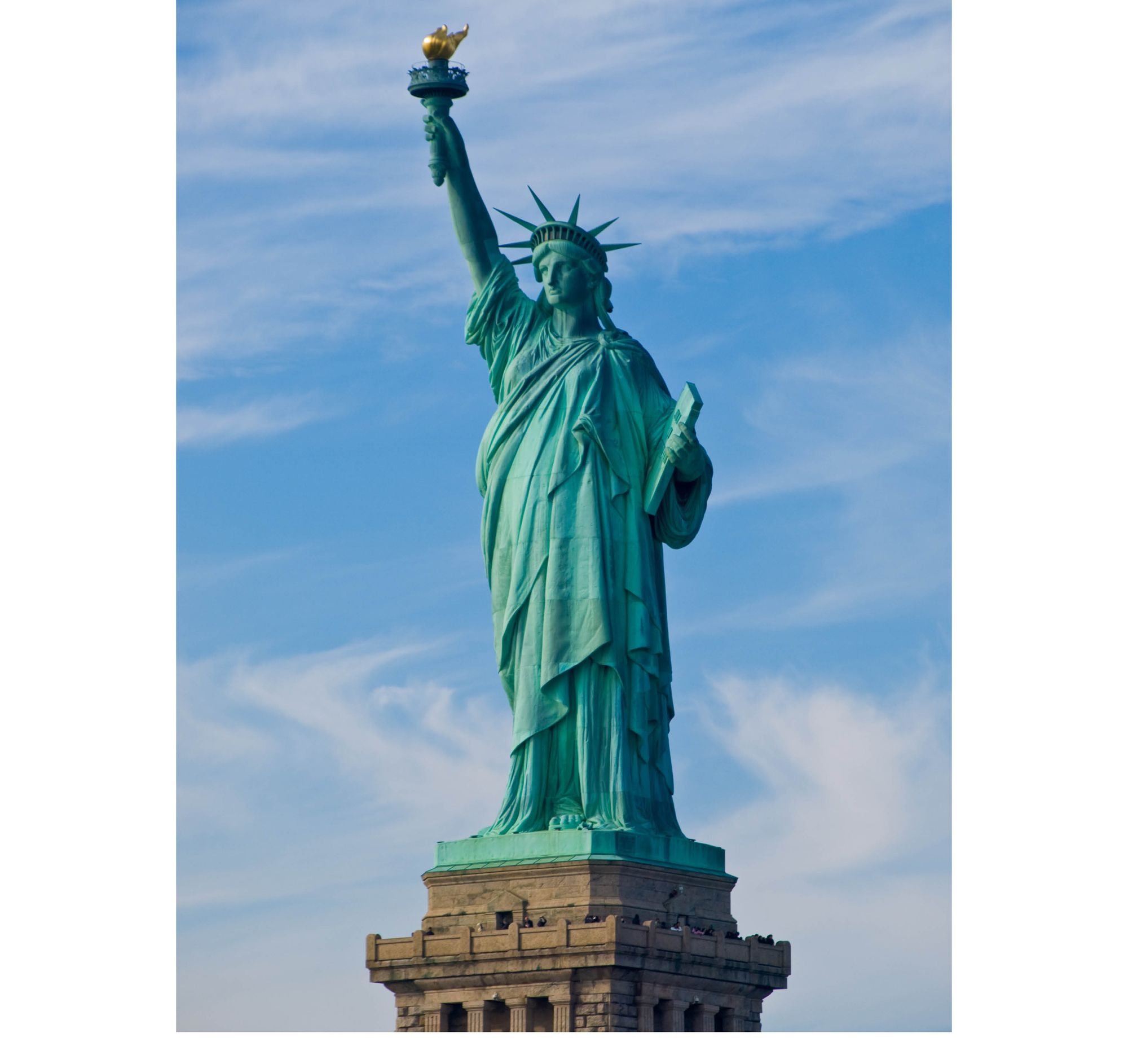
When it was first inaugurated in 1886, the monument looked significantly different. A gift from the French people to the United States of America, the statue marked the geopolitical alliance formed between the two nations during the American revolution. In its first years, the statue’s outer shell shone brightly under the sun with the metallic hue of copper. In her book The Secret Lives of Color, cultural historian Kassia St. Clair describes how, over a period of 30 years after its inauguration, the elements to which the statue was exposed slowly oxidized the copper, ultimately forming the distinctive turquoise-green patina that covers it today. This color is known as verdigris, and it was once a prized finish in architecture, used extensively in palaces, monuments, and other landmarks throughout Europe and North America. The bright shade of verdigris can still be observed today on the roofs of historical buildings like the Cathedral in Berlin, Germany, or the Belvedere Palace in Vienna, Austria—symbols of wealth, power, and national identity.
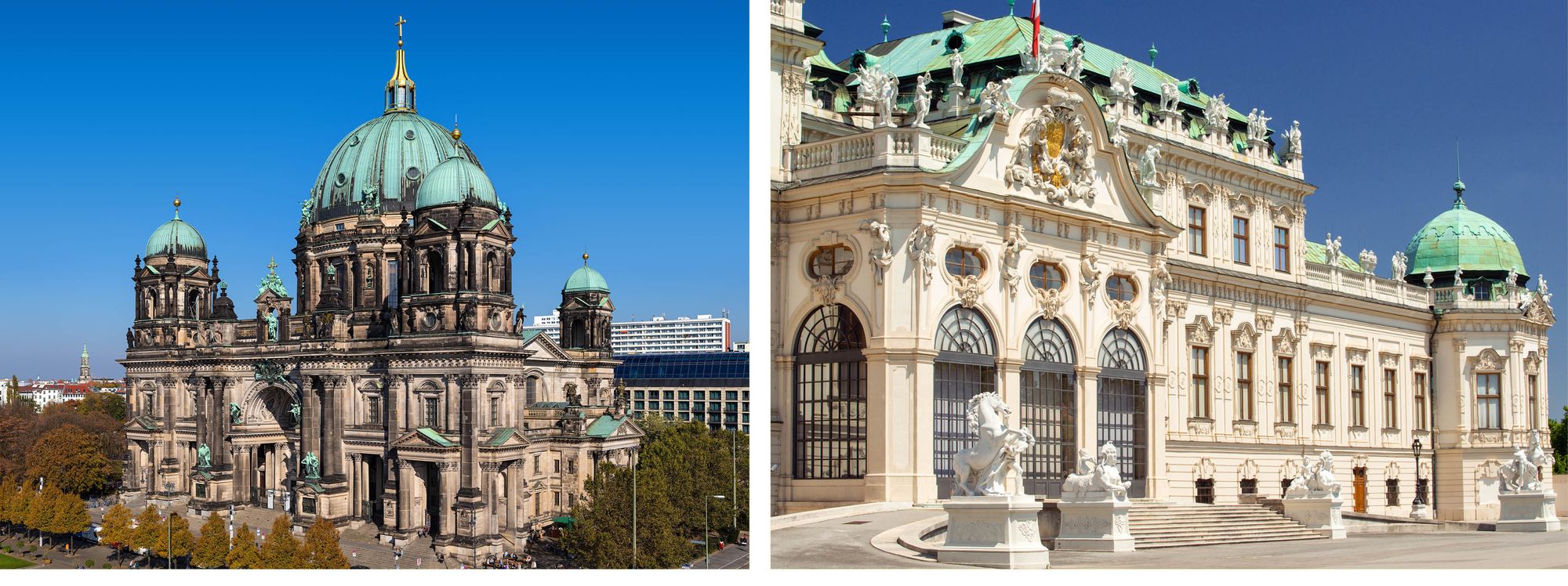
Copper is, indeed, quite the shapeshifter; an element that, under a rosy hue, hides the potential for so many variations in tone. In ancient China, malachite—a copper carbonate hydroxide mineral—was utilized in the preparation of the Han dynasty’s purples and blues. These pigments were used in various domestic, artistic, and ritualistic artifacts such as terracotta sculptures, ceramics, and wall paintings from around 1200 B.C. until the end of the rule of the Han dynasty around 220 A.D. In Egypt, copper was an ingredient of what is now known as “Egyptian blue” or cerulean, thought to be the first synthetically produced pigment. Its manufacturing process involved firing quartz, lime, a copper compound and an alkali flux at temperatures ranging from 850°C to 1000°C. Another pigment, Egyptian green, could be obtained by firing a similar mixture at even higher temperatures, ranging from 950°C to 1100°C.
A fugitive substance, copper spreads its unstable hues through many geographies. The earliest documented use of Egyptian blue dates back to circa 3250 B.C. in an alabaster bowl excavated in the ancient, sacred city of Nekhen in contemporary Egypt. The artifact is currently held away from its original homelands as part of the collection of the Museum of Fine Arts in Boston, U.S.A. In Ancient Greece, Theophrastus provided an account of the manufacturing of verdigris by exposing copper to vinegar fumes; later on, Roman author Pliny the Elder documented a similar process. Although Theophrastus’ account is widely considered the earliest documentation of the technique for obtaining verdigris, according to science writer Philip Ball, there are indications that this particular process might have made its way into Europe in the context of Arabian alchemical knowledge.
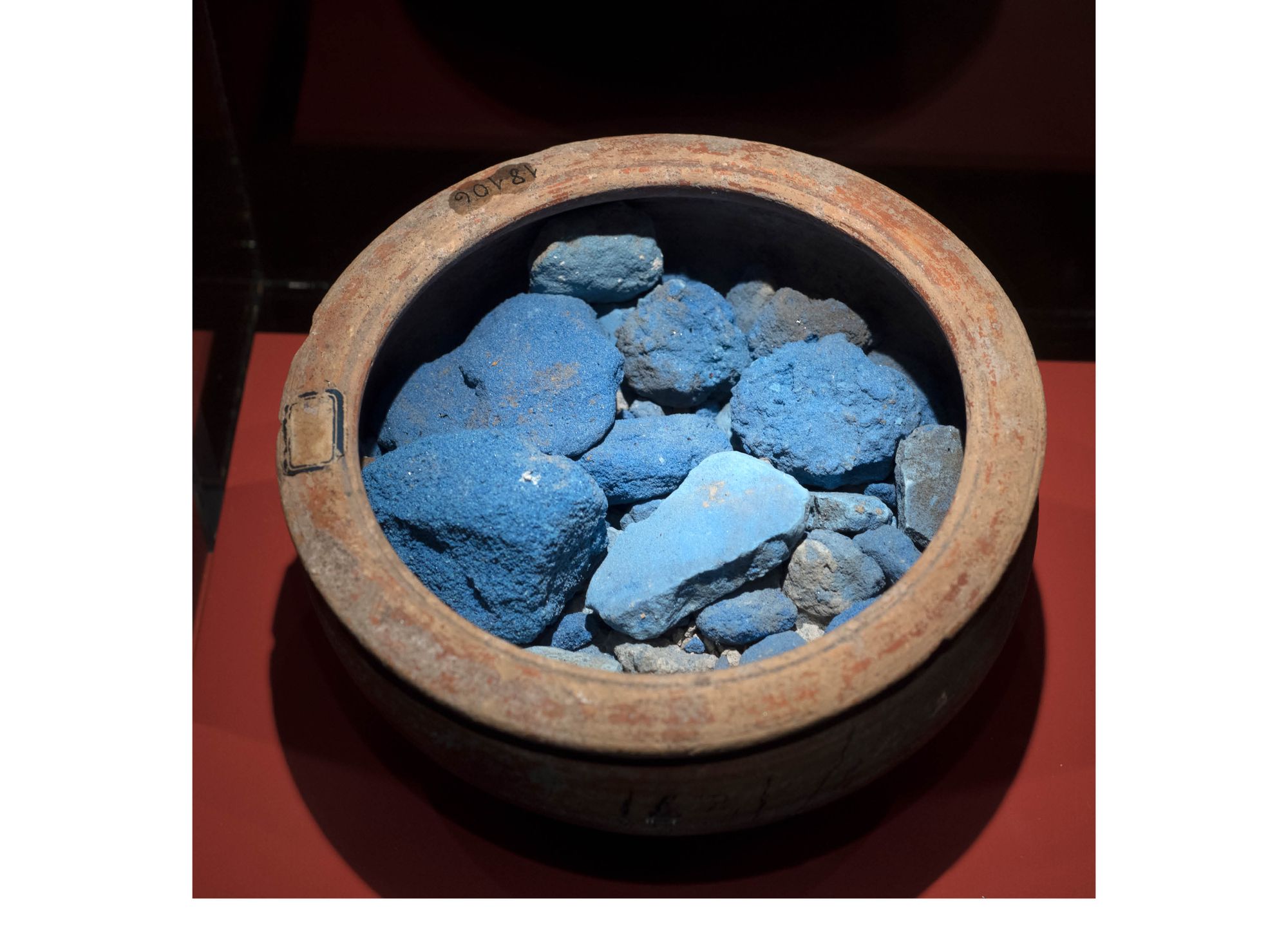
Copper is also present in “Scheele’s green,” a pigment that, though displaying a slightly muddy tone, was incorporated into an expanding palette of mass-produced pigments by the 19th century. For a long time, stable green pigments had been extraordinarily difficult to obtain and produce on a large scale: verdigris did very poorly as a pigment for oil paints, and was remarkably unstable. It had a tendency to corrode support surfaces like paper and parchment, and reacted badly with other colors. Organic greens like sap green or iris green were difficult to produce, and relied on the availability of large amounts of biological material.
By the end of the 18th century, however, new developments were on the way. In 1775, whilst researching the properties of arsenic, Swedish scientist Carl Wilhelm Scheele developed a technique that resulted in the green compound copper arsenite—Scheele’s green. Roughly 30 years later, in 1814, a process resulting in the compound copper aceto-arsenite was developed by Friedrich Russ and Wilhelm Sattler of Schweinfurt. The resulting color came to be known in English as “emerald green,” and its manufacture involved processing copper verdigris with vinegar, white arsenic, and sodium carbonate.
During the first half of the nineteenth century, Scheele’s green and emerald green became increasingly popular. The pigments were being produced at mass scale, and their hues could be observed in a wide range of uses from the ateliers of artists, to high-end domestic goods—wall paints, colored candles, soft fabrics, intricate wallpapers, and children’s toys. By the second half of the nineteenth century, however, a number of mysterious deaths were eventually revealed to be linked to one common factor: the presence of arsenic-derived greens in domestic spaces. Indeed, when goods painted with emerald or Scheele’s green were brushed, they produced an arsenic-laced dust; when exposed to moisture, the compounds reacted by releasing a deadly gas known as arsenic trihydride. Color historians Philip Ball and Kassia St. Clair note that even the renowned French leader Napoleon Bonaparte may have fallen victim to this—the walls of his exile home in the damp island of St. Helena were painted green, which led many to speculate that this could’ve been a contributing factor to his death.
Throughout the second half of the 19th century and the early 20th century, the demand for copper expanded exponentially. Its uses in machinery and electrical transmission, resistance to water, and heat conductivity had made it a valuable and versatile commodity in the early waves of industrialization in the Western world. In a 1920 article for The Annals of the American Academy of Political and Social Science, the author B.S. Butler reports that its price per pound soared from 13.3 cents in 1914 to 27.3 cents in 1917—an impressive 105% increase. The conflict had significantly raised the demand for the metal, used in numerous applications in warfare such as the manufacture of weapons and vehicles.
“By the time World War II began, copper had become a strategic resource utilized in a wide range of military applications”
The rapid advancements in military technologies, telecommunications, and electrical machinery that characterized the interwar period further cemented the importance of copper. Historian Angela Vergara reports that the metal became a key commodity in the international market during the twentieth century, largely due to its uses in the electrical and war industries. Indeed, by the time World War II began, copper had become a strategic resource utilized in a wide range of military applications; shortages loomed as domestic production in the United States of America struggled to meet wartime demands, and securing foreign sources of copper became a matter of geopolitical interest.
Indeed, by 1973, the military regime of Augusto Pinochet in Chile made it one of its top priorities to grant the U.S.A. unrestricted access to the country’s copper reserves. The nationalization of copper mining, enacted by socialist president Salvador Allende a few years earlier in 1971, had dealt a significant blow to the U.S.A.’s access to the metal, with profound repercussions to its imperialist interests in the midst of the Cold War. Pinochet affirmed his allegiance on a phone call to U.S. President Richard Nixon and Secretary of State Henry Kissinger, a mere three days after the coup that killed Allende and installed a dictatorship that would last for 17 years. Since the mid-19th century, Chile had been one of the world’s most prolific producers of this malleable, conductive metal—it is home to an impressive 20% of the world’s known copper reserves. Indeed, as B.S. Butler notes, “countries like Chile and Peru, Mexico and the Belgian Congo [sic], produce large amounts of copper and use but little, while others, like the United States and Canada, both consume and export large amounts.” The removal of the Allende government, enacted with material and strategic support from the U.S. Central Intelligence Agency, inaugurated years of brutal dictatorship, intense political repression, and human rights abuses in Chile—a painful history that no monument to freedom can ever erase.
“What are concepts of liberty built upon, and who are they meant to serve?”
What are concepts of liberty built upon, and who are they meant to serve? A few hints can, perhaps, be found in the Mount Vernon, Virginia home of one the U.S.A.’s “Founding Fathers,” George Washington, one of the most emblematic figures of the country’s carefully crafted nationalist narrative. In the 1770s, Washington started to expand his mansion with the construction of the New Room in its north wing. This was to be the grandest and most impressive section of the home: a “showroom” or statement room in the tradition of grand saloons in 18th-century British country houses.” The space displayed Washington’s art collection, and at the time of his death, it housed a total of 21 works of paintings, drawings, and prints. When necessary, it could also host larger, formal dinner receptions to high-ranked guests and heads of government. Microscopic analysis reveals that the room’s walls were painted with two distinct copper-based greens, a sea green verditer on its wallpaper, and a deep verdigris on details like friezes, window panels, or as a finish for the top section of the wallpaper. Verdigris also made an appearance in the mansion’s smaller dining room; the color was chosen by Washington himself, who described it as “grateful to the eye.”
“The fugitive hues of copper become [...] a connecting thread between a nation’s deranged mythology of a God-given right to domination, and parallel histories of profound suffering within its borders and beyond.”
The fugitive hues of copper become, in this way, a connecting thread between a nation’s deranged mythology of a God-given right to domination, and parallel histories of profound suffering within its borders and beyond. The images are striking: Washington’s mansion, a seat of power where an elite white man socializes whilst being served by enslaved household staff. Napoleon alone on his island—an exiled General whose demise might have been brought about not by the sword, but by an invisible domestic enemy. Pinochet in his Presidential office, inaugurating 17 years of brutal repression with a call assuring Kissinger and Nixon that Chile’s copper was theirs. The Statue of Liberty, raising a torch to a nation built on stolen land and enslaved labor. The road to an empire is littered with the open wounds of mines, fugitive pigments, and the toxic fumes of impossible color lines. What do the Statue’s empty eyes see? Who does a monument to a nation built on a corroded notion of liberty truly welcome?
Luiza Prado de O. Martins (she/her) is an artist and researcher whose work examines themes around fertility, reproduction, coloniality, gender, and race. In her doctoral dissertation she approaches the control over fertility and reproduction as a foundational biopolitical gesture for the establishment of the colonial/modern gender system, theorizing the emergence of ‘technoecologies of birth control’ as a framework for observing—and resisting, disrupting, troubling—colonial domination. Her ongoing artistic research project, “A Topography of Excesses,” looks into encounters between human and plant beings within the context of indigenous and folk reproductive medicine, approaching these practices as expressions of radical care. Throughout 2020, she will develop the long-term garden project “In Weaving Shared Soil” in collaboration with The Institute for Endotic Research. She is currently based in Berlin. She is a founding member of Decolonising Design.
Title image by visual artist Manuela Eichner.


